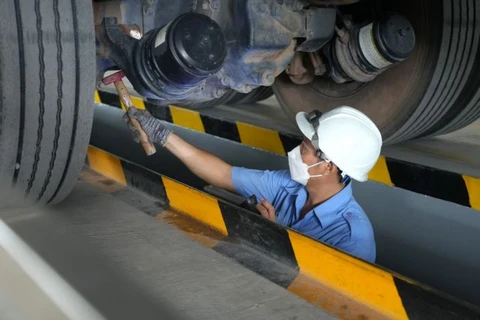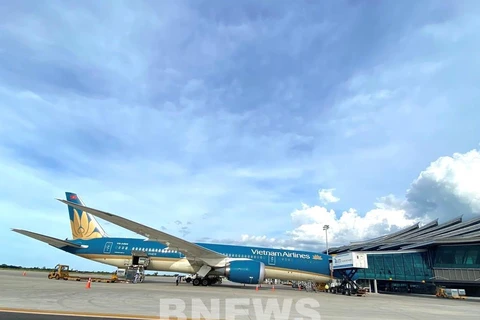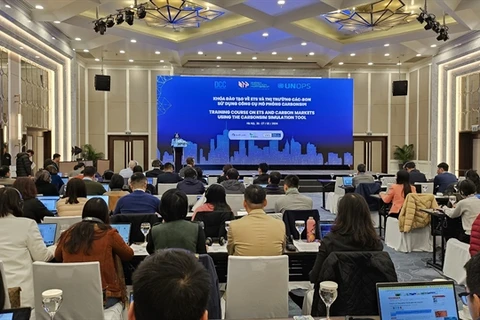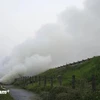
Hanoi (VNA) - As part of its commitment to reducing environmental pollution at COP26, Vietnam will start controlling vehicle emissions from January 1, 2025, following the Law on Road Traffic Safety, recently passed by the National Assembly.
This law mandates emissions testing for motorcycles at certified centers in accordance with environmental protection laws.
The Institute of Transport Strategy and Development under the Ministry of Transport reported that from 2005 to 2022, the annual growth rate of motorcycles in Vietnam averaged around 9.1 percent.
Currently, there are approximately 69.2 million registered motorcycles, with about 45.5 million actively in use nationwide.
In major cities, motorcycles are the primary mode of transportation and the largest source of emissions.
Studies in Hanoi, Ho Chi Minh City, and Da Nang reveal that motorcycles older than five years tend to exceed current emissions standards, with those older than ten years emitting significantly more pollutants.
Motorcycles older than ten years constitute over 50 percent of the total motorcycle population in these cities. Specifically, in Hanoi, this figure is 72.58 percent; in Ho Chi Minh City, 68 percent; and in Da Nang, over 59 percent.
Nguyen Xuan Thuy, former Director of the Transport Publishing House, emphasized that emissions testing not only helps reduce environmental pollution and improve quality of life but also raises public awareness about regular vehicle maintenance to meet emissions standards, thereby enhancing vehicle and traffic safety.

Khuong Kim Tao, former Deputy Chief Administrative Officer of the National Traffic Safety Committee, noted that Vietnam currently does not have regulations on the lifespan of motorcycles.
Such regulations only apply to vehicles like trucks, buses, and taxis. Controlling motorcycle emissions, although mandated by the 2008 Road Traffic Law, has faced many challenges in implementation.
Resuming these efforts is crucial to meet Vietnam's environmental commitments made at COP26.
However, Tao advised that the implementation should be carefully studied to avoid disrupting socio-economic development while effectively controlling emissions.
Tao suggested that setting emissions standards for newly manufactured, assembled, and imported motorcycles is important.
Gradually replacing gasoline engines with batteries and establishing a quality threshold for emissions from existing motorcycles are necessary steps.
For older, more polluting motorcycles, maintenance or engine replacement could ensure they meet acceptable emissions levels in a shorter timeframe.

Setting specific emissions quality standards will require in-depth research by specialized regulatory bodies to minimize the impact on the number of vehicles requiring maintenance.
Financial support programs should help replace old motorcycles with new ones.
Additionally, Tao recommended developing emissions testing centers for motorcycles with proper legal frameworks to ensure efficiency and minimize inconvenience to the public.
Implementing these measures effectively can significantly reduce motorcycle emissions, contributing to a cleaner environment and improved public health./.






















